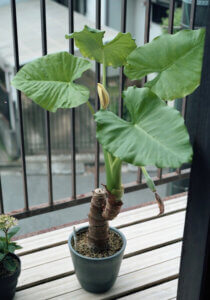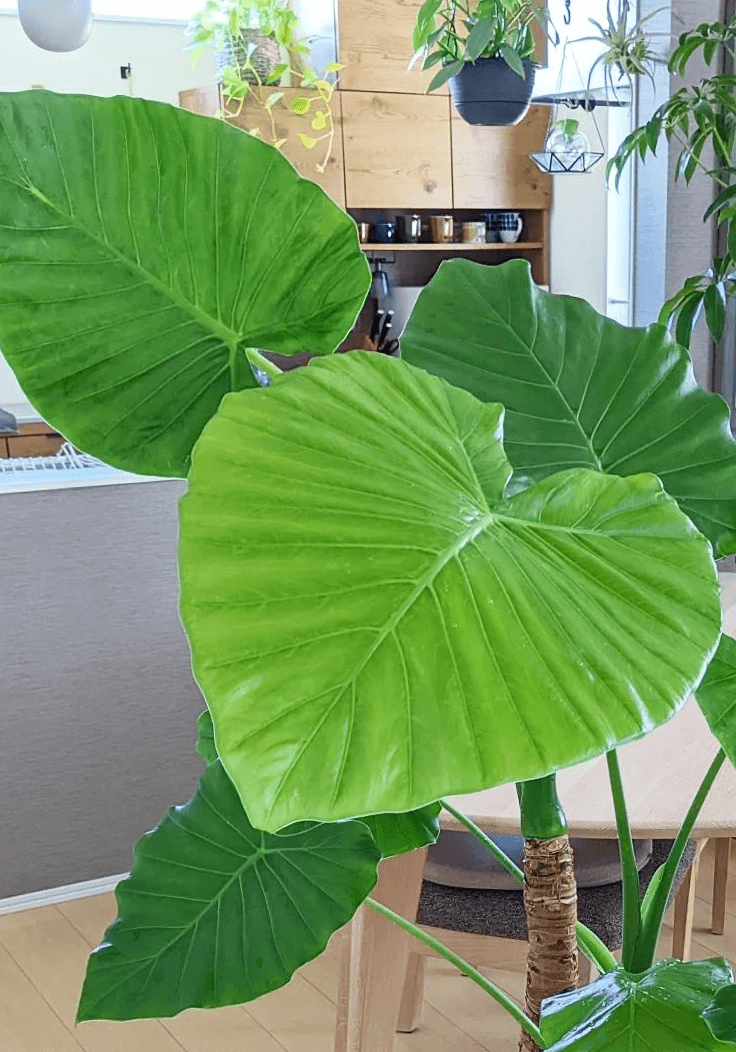Basic Information
Alocasia Odora, also known as Elephant Ear or Night-Scented Lily, is a popular houseplant from Asia with large, heart-shaped leaves and a unique scent. It needs specific care to thrive and can be a stunning and eco-friendly addition to any suitable environment. Here’s everything you need to know about caring for it.



Light
Alocasia Odora thrives in bright, indirect sunlight. It’s native to forest floors, so direct sunlight can harm its leaves. For indoor growth, place it near an east-facing window. If outdoors, a spot with morning sun and afternoon shade is ideal, as too much sun can scorch its leaves, while too little can hinder its growth.
Water
Keeping the soil moist without overwatering is essential to maintain a healthy Alocasia Odora plant, as excess water can lead to root rot. Ensure that the soil is evenly moist but not waterlogged and has proper drainage. Only water the plant when the top 2-3 inches of soil or potting mix has dried out. Keep an eye out for signs of overwatering, such as a collapsed base, moldy potting mix, yellowing of older leaves, or the death of the plant.
Tip: During winter, Alocasias are dormant and need less water.
Soil
Well-draining soil is crucial for Alocasia Odora. A mix of peat, perlite, and sand suits it well. The soil should be slightly acidic, with a pH of 5.5 to 6.5. This tropical plant thrives in rich, organic soil that closely mimics its natural habitat.
Temperature
Alocasia Odora prefers warm and stable temperatures ranging from 65 to 85°F (18 to 29°C). It is not tolerant of cold weather, so keeping it away from drafty windows and doors is essential. If the temperature drops below 50°F (10°C), it should be protected or brought indoors to avoid any damage.
Humidity
Alocasia Odora thrives in a high-humidity environment, as it is originally from the tropics. It is recommended to maintain indoor humidity levels of at least 50%. You can use humidifiers to increase the humidity or place the pot over a tray of moist pebbles. However, it is vital to be cautious of excessively moist conditions that may encourage mold growth.
Tip: Consider misting your Odora regularly with a spray bottle to prevent leaf wilting and drying.
Fertilizer
During the growing season (spring and summer), feed your Alocasia Odora once a month with a diluted and balanced liquid fertilizer. Avoid fertilizing when the plant goes dormant in winter, and make sure not to over-fertilize since it can damage the plant.
Growth Rate
This plant grows relatively fast under optimal conditions, usually reaching maturity in two to three years. It enjoys a somewhat cramped root environment, so don’t rush to repot it unless necessary. During the active growing season, it will produce new foliage at a noticeable rate.
Pet Safety
Caution is needed as every part of the Alocasia Odora contains calcium oxalate crystals, making it toxic to pets and humans if ingested. Keep it out of reach of curious pets and children to prevent accidental ingestion.
Grow in Semi-Hydro
- Alocasia plants excel in Semi-hydroponics (LECA/Pon) due to their natural inclination for root growth and humidity.
- Successfully transitioning Alocasia to Semi-hydroponics is enhanced with a Nutrient Stagnant Wicking (NSW) setup.
- Alocasia roots adapt seamlessly to the water in LECA/Pon, with quick resolution of any root hair issues in NSW setups.
- Fertilizer includes a nutrient mix concentration of approximately 800-1000ppm.
- These plants are versatile in different temperature and humidity settings, thriving in controlled environments.
- Long-term care involves maintaining a constant water reservoir and performing occasional system flushes for sustained growth.
Tips
- Rotate the plant occasionally for even growth and light exposure.
- Wipe leaves with a damp cloth to remove dust and enhance photosynthesis.
- Inspect regularly for pests like spider mites, aphids, and mealybugs, treating with insecticidal soap or neem oil as needed.
- Protect it in winter with mulch in cooler climates or bring it indoors.
- If grown in a pot, ensure it has adequate drainage to prevent waterlogging.
Alocasia Odora is a beautiful tropical plant that requires specific care for optimal growth.
Happy planting! 🌱


